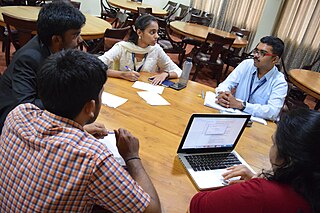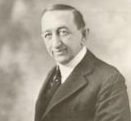 W
WThe Advertising Research Foundation (ARF) is a nonprofit industry association for creating, aggregating, synthesizing and sharing knowledge in the fields of advertising and media. It was founded in 1936 by the Association of National Advertisers and the American Association of Advertising Agencies. Its stated mission is to improve the practice of advertising, marketing and media research in pursuit of more effective marketing and advertising communications. Its membership consists of over 400 advertisers, advertising agencies, research firms, media companies, educational institutions and international organizations.
 W
WArtificial neural networks (ANNs), usually simply called neural networks (NNs), are computing systems inspired by the biological neural networks that constitute animal brains.
 W
WIn marketing, Bayesian inference allows for decision making and market research evaluation under uncertainty and with limited data.
 W
WIn statistics, cluster sampling is a sampling plan used when mutually homogeneous yet internally heterogeneous groupings are evident in a statistical population. It is often used in marketing research. In this sampling plan, the total population is divided into these groups and a simple random sample of the groups is selected. The elements in each cluster are then sampled. If all elements in each sampled cluster are sampled, then this is referred to as a "one-stage" cluster sampling plan. If a simple random subsample of elements is selected within each of these groups, this is referred to as a "two-stage" cluster sampling plan. A common motivation for cluster sampling is to reduce the total number of interviews and costs given the desired accuracy. For a fixed sample size, the expected random error is smaller when most of the variation in the population is present internally within the groups, and not between the groups.
 W
WConjoint analysis is a survey-based statistical technique used in market research that helps determine how people value different attributes that make up an individual product or service.
 W
WDigitalMR which since August 2021 is known as DMR is a tech company specialised in using Artificial Intelligence to create intelligent datasets and solve business problems. With its headquarters in London - UK, parent company in Cyprus, and team members in multiple countries, it offers its SaaS solutions globally. Founded in 2010, the company has individual staff memberships, with YPO, ESOMAR, MRS, SMRA.
 W
WEye tracking is the process of measuring either the point of gaze or the motion of an eye relative to the head. An eye tracker is a device for measuring eye positions and eye movement. Eye trackers are used in research on the visual system, in psychology, in psycholinguistics, marketing, as an input device for human-computer interaction, and in product design. Eye trackers are also being increasingly used for rehabilitative and assistive applications . There are a number of methods for measuring eye movement. The most popular variant uses video images from which the eye position is extracted. Other methods use search coils or are based on the electrooculogram.
 W
WThe Ferranti Market Research Terminal (MRT) was, arguably, the world’s first application-specific handheld computer. It was designed specifically for the market research sector as a means to augment the regular clipboard schemes that, at the time, were common-place, in social and market research. Despite having an appearance of a calculator built into a clipboard, the reality was that the unit contained a sophisticated form of programmable data-logger that, in response to an interviewer reading questions to the interviewee, had answers digitally recorded via pressing appropriate keys on the unit. The unit contained a bespoke operating system to support field based market research. The Ferranti Market Research Terminal (MRT) is also of historical significance to the computing industry since it marked the last original computer design from Ferranti, a long established business that had risen to fame through a collaboration Manchester University to produce the "Mark 1", the world’s first commercial computer and later with Cambridge University producing the "Atlas" and "Titan" computers which, at their peak, held around 25% of the computing market.
 W
WA focus group is a group interview involving a small number of demographically similar people or participants who have other common traits/experiences. Their reactions to specific researcher/evaluator-posed questions are studied. Focus groups are used in market research to better understand people's reactions to products or services or participants' perceptions of shared experiences. The discussions can be guided or open. In market research, focus groups can explore a group's response to a new product or service. As a program evaluation tool, they can elicit lessons learned and recommendations for performance improvement. The idea is for the researcher to understand participants' reactions. If group members are representative of a larger population, those reactions may be expected to reflect the views of that larger population. Thus, focus groups constitute a research or evaluation method that researchers organize for the purpose of collecting qualitative data, through interactive and directed discussions.
 W
WIn geomarketing and internet marketing, geotargeting is the method of delivering different content to visitors based on their geolocation. This includes country, region/state, city, metro code/zip code, organization, IP address, ISP, or other criteria. A common usage of geotargeting is found in online advertising, as well as internet television with sites such as iPlayer and Hulu. In these circumstances, content is often restricted to users geolocated in specific countries; this approach serves as a means of implementing digital rights management. Use of proxy servers and virtual private networks may give a false location.
 W
WGuidepoint is a world leading expert network, providing business & government professionals with opportunities to communicate with industry and subject-matter experts to answer hard to research questions. Guidepoint clients consult with these experts over the phone, in-person at conferences, on teleconferences, at custom events and workshops, or may gather their primary research data through surveys, polls, or web-based data offerings.
 W
WIntent scale translation is a mathematical technique used by marketers to convert stated purchase intentions into purchase probabilities, that is, into an estimate of actual buying behaviour. It takes survey data on consumers purchase intentions and converts it into actual purchase probabilities.
 W
WIRI is a data analytics and market research company, headquartered in the U.S. which provides clients with consumer, shopper, and retail market intelligence and analysis focused on the consumer packaged goods (CPG), retail, and healthcare industries.
 W
WThe Media Technology Monitor (MTM) is a research product designed to monitor Canadians' use and adoption of new and existing technologies. The first MTM 18+ questionnaire, which focuses on Canadian adults, was distributed in 2005 and now consists of two annual telephone and web surveys conducted in the spring and fall of each year. MTM 18+ survey Canadians from all Provinces and Territories of Canada.
 W
WCharles Coolidge Parlin was the American "manager of the division of commercial research of the Curtis Publishing Company" in charge of selling advertising spots in the Saturday Evening Post. He is credited as being the founder and a "pioneer" in the area of market research.
 W
WThe Portable People Meter (PPM), also known as Nielsen Meter, is a system developed by Arbitron to measure how many people are exposed or listening to individual radio stations and television stations, including cable television. The PPM is worn like a pager, and detects hidden audio tones within a station or network's audio stream, logging each time it finds such a signal.
 W
WQualtrics is an American experience management company, with co-headquarters in Seattle, Washington and Provo, Utah in the United States. The company was founded in 2002 by Scott M. Smith, Ryan Smith, Jared Smith, and Stuart Orgill.
 W
WSecondary research involves the summary, collation and/or synthesis of existing research. Secondary research is contrasted with primary research in that primary research involves the generation of data, whereas secondary research uses primary research sources as a source of data for analysis. A notable marker of primary research is the inclusion of a "methods" section, where the authors describe how the data was generated.
 W
WThe Price Sensitivity Meter (PSM) is a market technique for determining consumer price preferences. It was introduced in 1976 by Dutch economist Peter van Westendorp. The technique has been used by a wide variety of researchers in the market research industry. The PSM approach has been a staple technique for addressing pricing issues for the past 20 years. It historically has been promoted by many professional market research associations in their training and professional development programs. The PSM approach continues to be used widely throughout the market research industry and descriptions can be easily found in many market research websites.